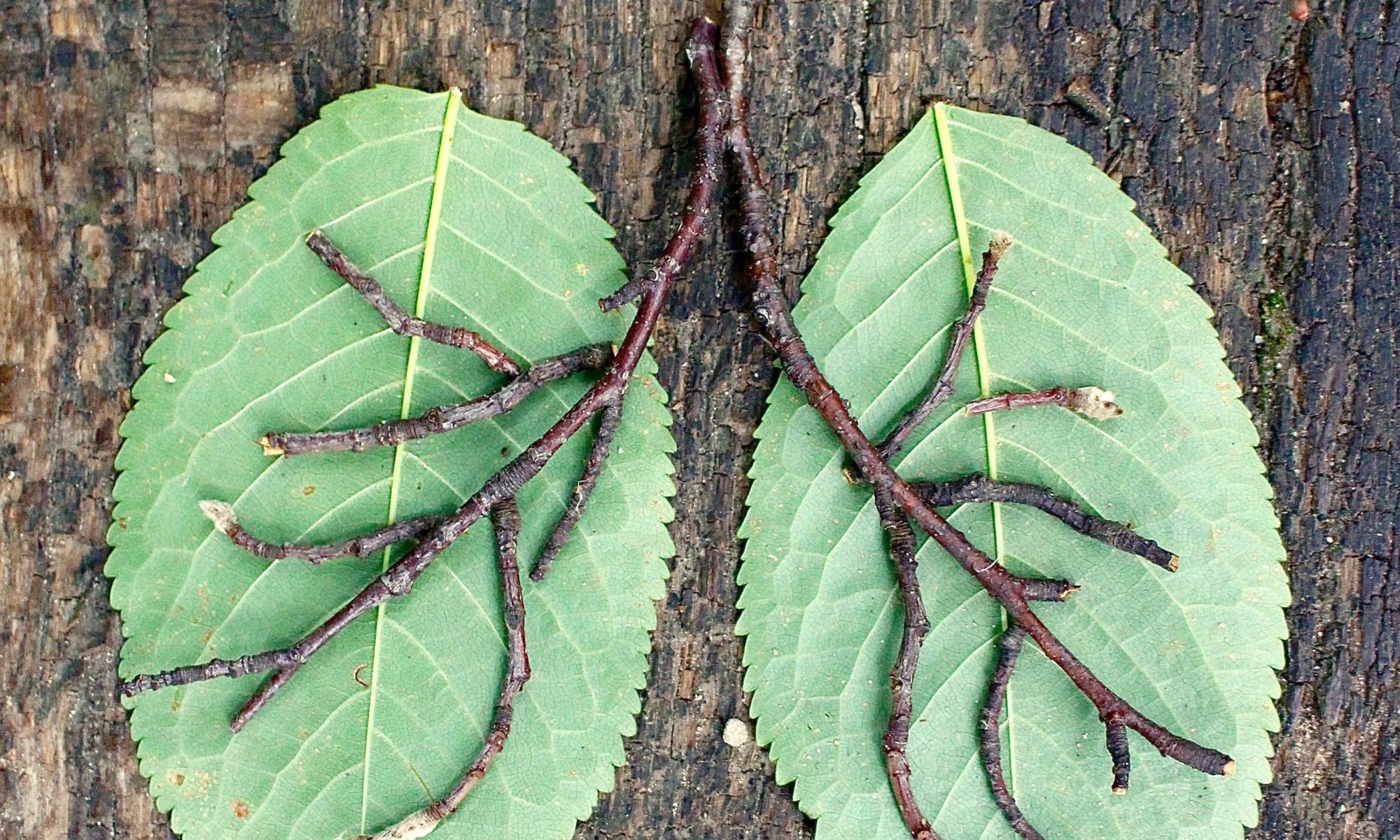A project developed for The International Forest Art Centre, Darmstadt, Germany and presented at The International Forest Art Symposium, and the 9th Forest Art Path exhibition, 2018, by SporaStudios. Exhibition Curated by Sue Spaid and International Forest Art Centre Director Ute Ritschel.
Concept Development
Early in our research for this project, we came across a BBC report that covered a 2015 celebration thrown by the city of Darmstadt to officially welcome the thousands of refugees it now hosts, mostly from the war-torn countries of Syria, Iraq, and Afghanistan. This stuck with us and became especially poignant in light of how our country, The United States, has responded to the refugee crisis – a crisis it had no small part in creating – by banning and jailing immigrants, and refugees, while blaming them, for all manner of social ills. However, we were encouraged by so-called “sanctuary cities” in the US, who refused to participate in the federal government’s anti-immigrant directives. For us, seeing Germany – who, at the time of this writing, admits more immigrants than any other country in the EU – and Darmstadt specifically as a sanctuary for refugees was an inspiring starting point for our project. The fact that an abandoned US military base, bordering the forest in which we were to work, was now being used to house refugees, solidified our intent to create an ecological artwork that incorporated migration and sanctuary as central themes. At the same time, we’d become immersed in garden design following a recent move and faced with designing a permaculture landscape at our new home. Inspired by the work of United Plant Savers, we became interested in botanical sanctuaries, specifically for wild medicinal plants endangered due to their overharvest for the herbal supplement industry. Having a home-scale herbal products business ourselves, we committed to incorporating endangered medicinal plants into our home medicine gardens, a collection we’re still building. At the same time, we were becoming more familiar with the idea of “sanctuary gardens”, and their various manifestations throughout the world, as sacred spaces for people to seek refuge and contemplation. Using the permaculture concept of “stacking functions” it made sense to us that a garden could function as a more holistic mutual sanctuary for plants as well as humans, and other animals.
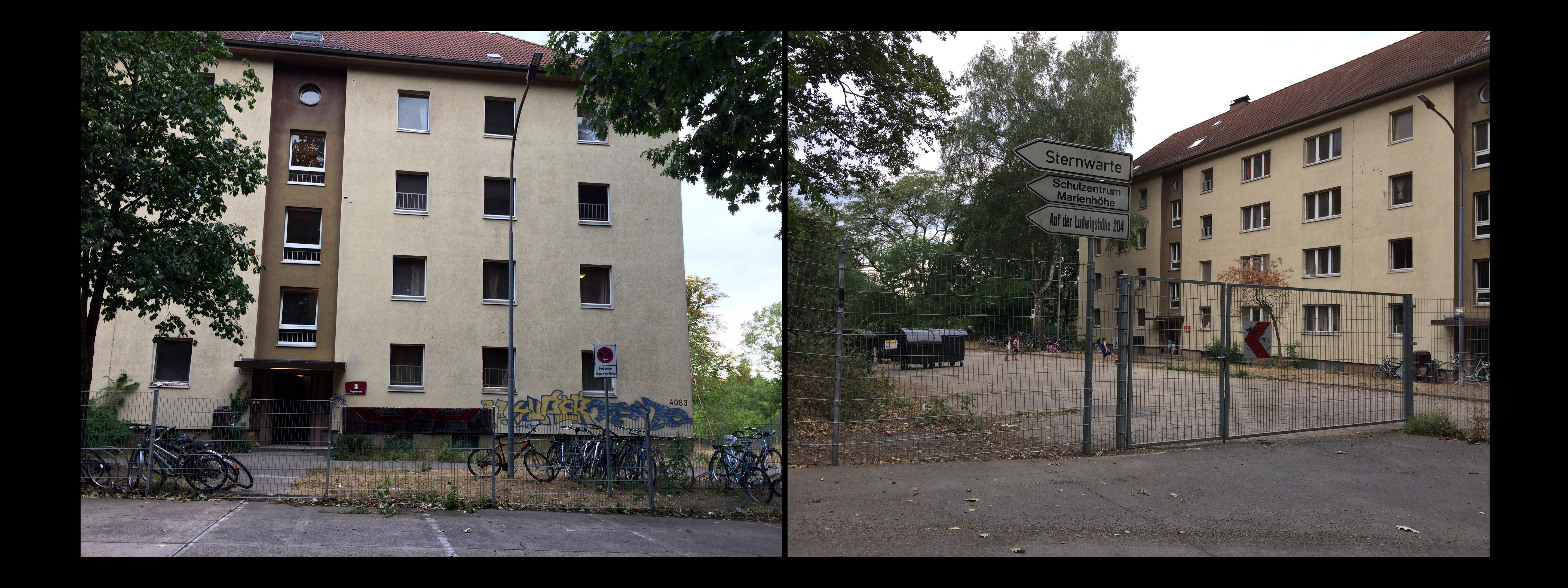
For our proposal, we conceived of a project that would layer various ideas of sanctuary, as expressed through “sanctuary cities”, “botanical sanctuaries”, and “sanctuary gardens”, in hopes of evoking a meditation on the blessings of plants and people, their interdependence, and their capacity to heal one another, while exploring ideas of endangerment, sanctuary, refuge, and migration concerning both people and plants. Our initial proposal was to create a “sanctuary garden” in the forest made-up of endangered medicinal plant species indigenous to North America. The idea was to relate migration to sanctuary and healing, rather than to threat and violence (as the case often is) and draw a parallel with Darmstadt’s hosting of refugees – many actually housed at an abandoned US military base stretching along the perimeter of the forest. The sanctuary garden would have more potency in light of the fact that Germany itself has a huge herbal medicine industry, sourced in part by wild harvested populations of plants around the world, including North America. It made sense to us, that Germany provide sanctuary, even in a small symbolic way, to the dwindling populations of plants in North America that feed the global herbal medicine trade. However, months into the planning process our communication regarding securing plant stock broke down with an email from Dr. Uwe Schippmann, Head of the Plant Conservation Division of Bundesamt für Naturschutz, which alerted us to the fact that the German National Species Conservation Law has strict conditions that non-native species must not be introduced in nature, i.e. outside of gardens and other urban structures. He recommended that we get in touch with a regional administrator to ensure that our project would not fulfill the definition of “introduction in nature”. Exhausted and already months in, we dropped the ball here on this particular manifestation of a sanctuary garden, expecting that the idea of a “forest garden” made up of “alien” plants (or the pursuit of any type of agroforestry concept) in Germany would likely be forced to challenge definitions already laid out in German law. No doubt this would all be an interesting research project on its own, but not well-suited to a three-week residency in the middle of forest.
We arrived in Darmstadt in disarray, our list of plants impossible to attain and grow, and increasingly encouraged to plant a permaculture inspired forest garden with edible “native” species rather than the “strange” medicinal plants we had originally proposed. As artists, we were reluctant to take this course because it eschewed the concept we’d been interested in exploring. Also, there were many qualified people already living in the area who could plant a forest garden. Why did we fly here? What are we doing? Some days later, a passerby in the forest inquired what we were doing there, and at the end of our exchange simply said, “so you’ve flown all the way to Germany to plant a garden?” Our response at the moment was, “yeah, we know, right?” We’re still dwelling on the absurdity, particularly in light of it being an eco-art exhibition, but there are certainly worse reasons to travel. One thing we did know was that our “garden”, given just the 3 of us, limited time, and an unforeseen drought, would be modest – though would hopefully spread year by year rather than decay and be removed like most forest art installations. But we’d wanted to convey a conceptual basis for the project for it to feel like art. That seemed missing – so yeah, we were just planting a garden. We were extremely well fed on the night of our arrival, and joined by lovely company, and after having knocked off a bit of jet lag at the “Nature Friend’s House”, we got up the next morning to a wonderful surprise. We were surrounded by medicinal plants – growing everywhere like weeds – in fact, they were weeds! We walked the forest roads for hours looking at art, but mainly noting the many medicinal, edible and generally useful, but underappreciated and detested “weeds” that we know well from back home – Nettles, Burdock, Dandelion, Goldenrod, Plantain, and many others. We inquired about some of them, got some distasteful responses and then inquired about the word and concept of “weeds” in the German language. We learned the word “unkraut”, which we were told translates to English as “non-plant”. We were reminded of the histories of both the United States and Germany and the violence perpetrated on humans designated as non-people. We were reminded of the sanctuary Darmstadt offered to refugees, many housed a short walk through the forest at an abandoned US military base. And we thought about our initial concept to provide sanctuary for rare North American species. We began thinking that an inversion of that concept would likely be even more interesting – not to mention more practical. We began rewriting our project concept to embrace this concept of the unwanted, migrating plant – the “weed”, which is arguably a closer analogy to a common disposition toward migrating humans, whose value to society often goes unrealized or unrecognized. And it was a plant that gave us this idea. We’d received a list of invasive species from curator Sue Spaid, who’d received it from artist Rebecca Chesney, also working on a project in the forest. We recognized all of the plants on the list, the majority being celebrated medicinal plants. One of those plants, Oregon Grape Holly, we recognized as a plant on the endangered “red list” of United Plant Savers as a result of its rapid decline in its “native” North America where it is harvested for the herbal supplement trade. We began noticing Oregon Grape Holly growing as an ornamental plant in front of homes and along city streets. When we inquired further, we found that this plant was not widely known as a medicinal plant in Germany, despite its prevalence as an herbal supplement, and most regarded the plant as a mildly invasive ornamental plant despite its rare status in North America. We found several of the plants growing in front of the Forest Art Center and decided to use a couple for our forest garden. The fact that a plant, endangered in the US, could find such a refuge in Europe seemed to be the link we were looking for. To most conservationists in Germany, the plant would likely be regarded as an exotic garden ornamental, and more or less useless, but once jumping the garden fence into the “wild” it could be considered an “alien” – maybe an invasive danger – there seemed to be no better illustration of migration and the complex attitudes applied to both people and plants outside of their “native” lands. We thought about the limitations of an approach to conservation that seeks to stabilize nature at a time when flux is necessary to counter human impacts on the planet, such as climate change, overdevelopment, and the toxification of the biosphere. We thought about cultures that protect themselves in various ways, by excluding others, often at the expense of diversity and resiliency.
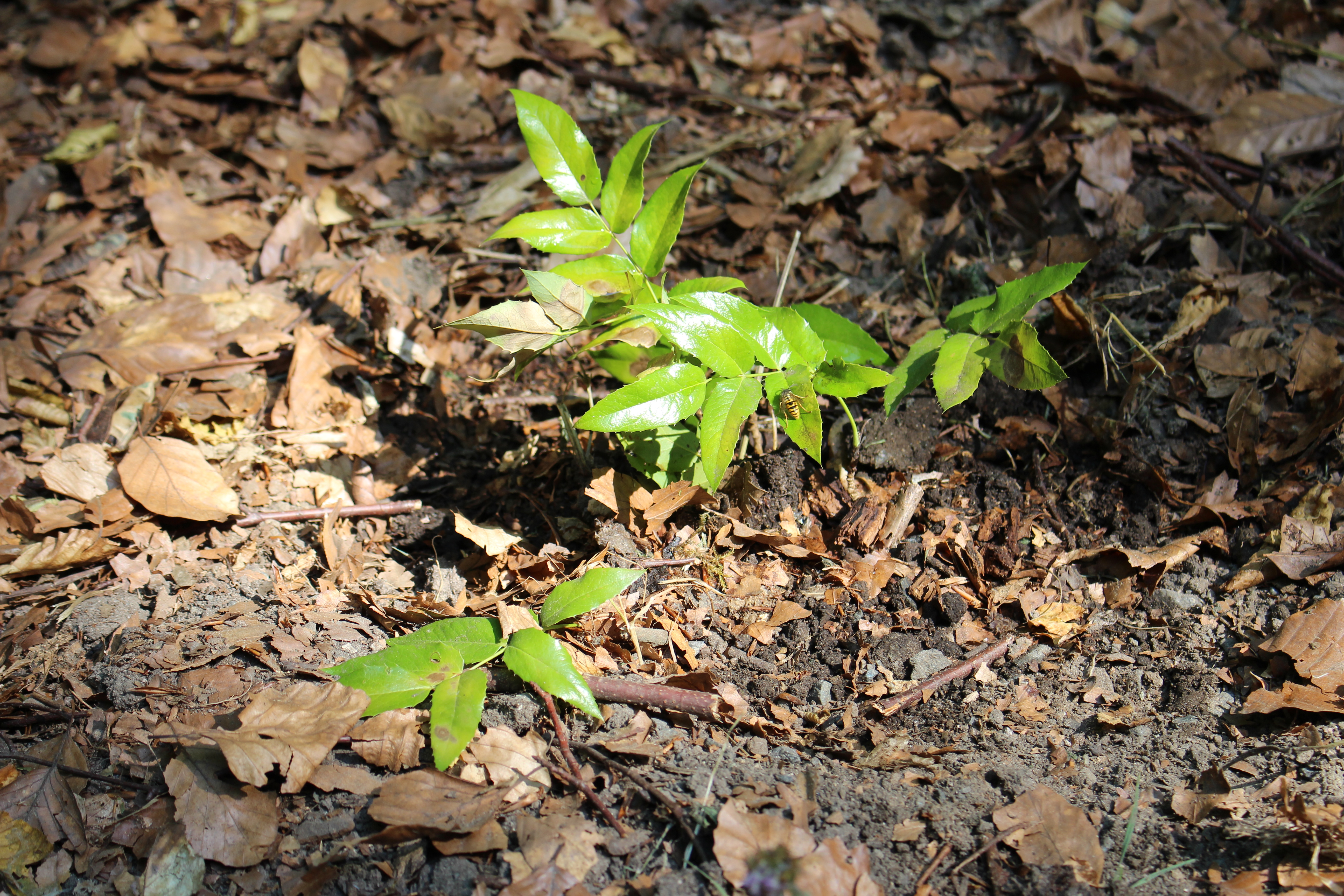
We rewrote our concept statement and retitled our project to coincide with our changing frame of reference. “The Migrant Sanctuary Garden” would now be populated by common plants that have migrated to temperate regions all around the world – some for centuries, and others more recently. The plants are all known for their tenacity, often found thriving in damaged landscapes; they are the first to pop up through cracks in city streets, occupy vacant lots, overgrazed or tilled farm land, and spread along the edges of the countless roads that cut through the landscape. They are migrant plants, but also pioneer plants that can exist in the most inhospitable conditions, putting green on the earth and setting the stage for ecological repair and succession. However, because of their vigor and success, these plants are often scorned as “weeds”, or “invasive”, “aliens”, set to “take over” our concept of what “natural” or “cultivated” (and the line that divides them) landscapes should be.
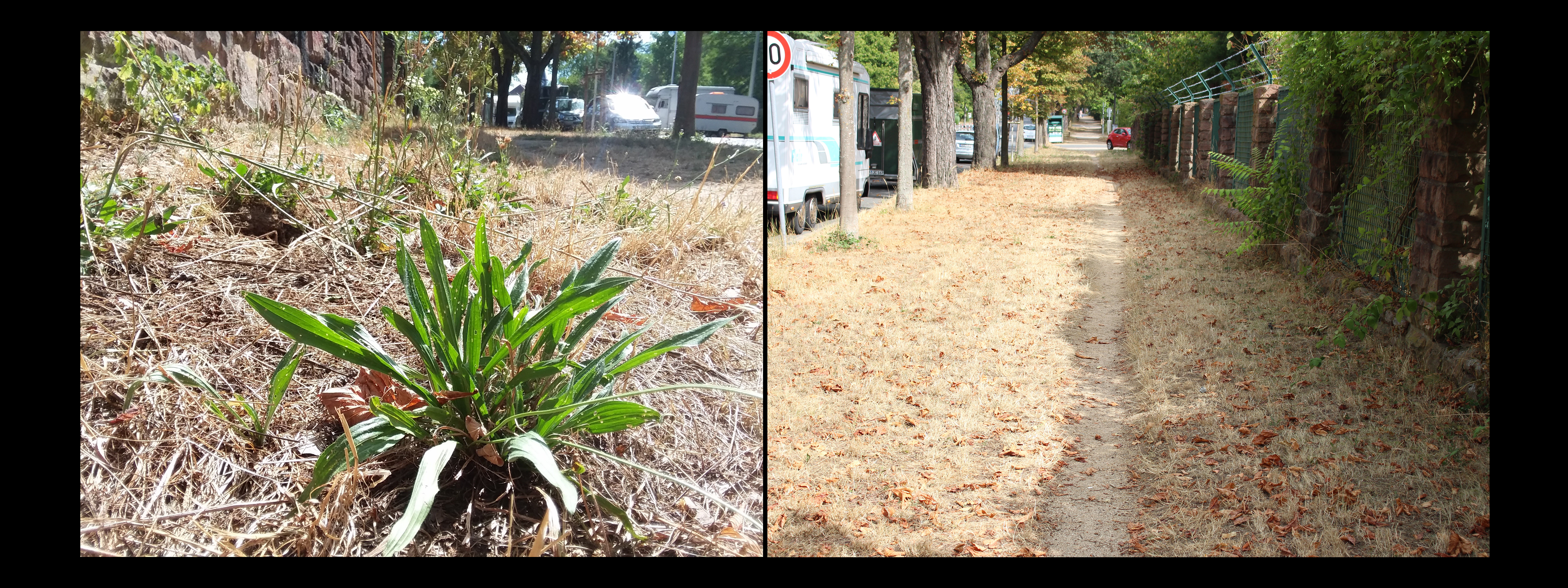
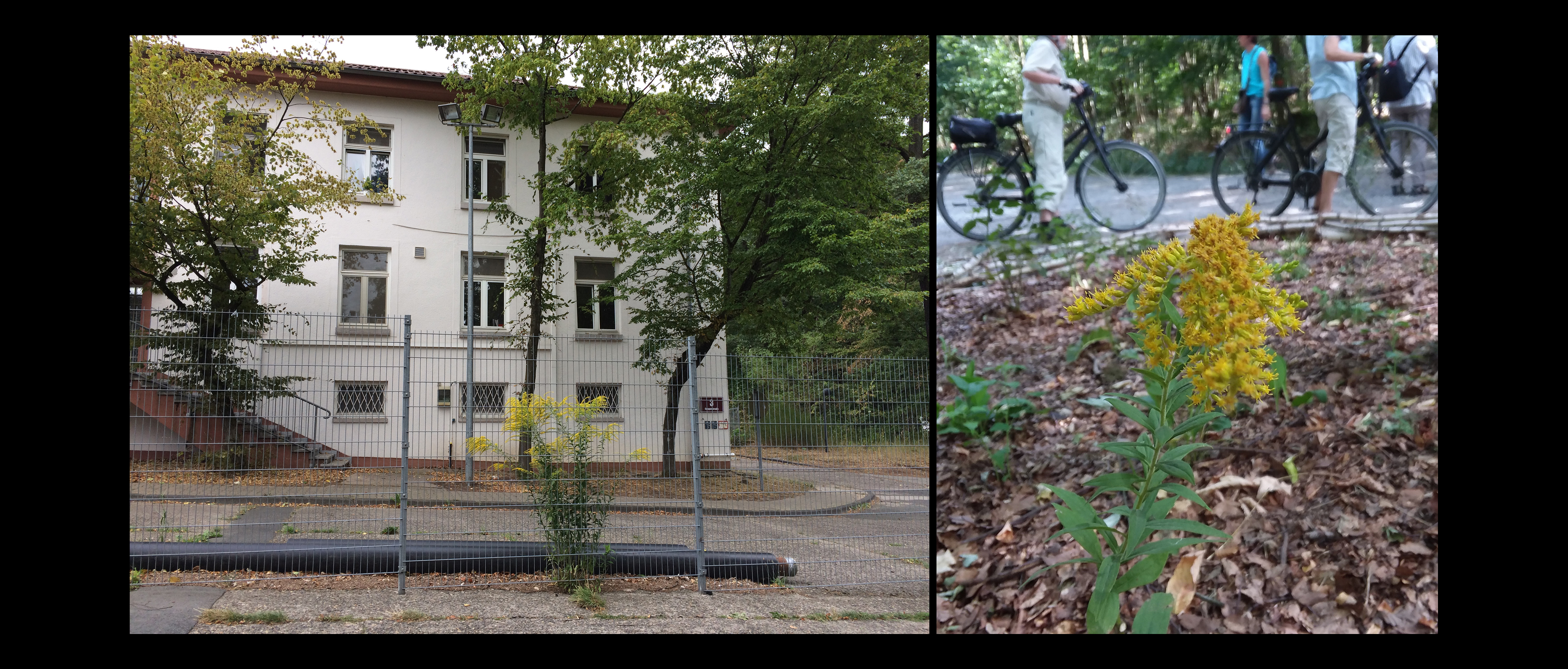
Site & Design
The site we decided on for our project was a crossroads in the forest. The symbolism of the crossroads grew increasingly apparent to us over the coming weeks as the severe drought went on, and climate change increasingly became the topic of conversation. Our site was already dense with brambles, nettles, burdock and other edge pioneer plants invited by the road opening up the forest to light and the compacted and degraded soil along its edges. Our forest garden uses existing indigenous cherry and oak trees to “host” our selected migrant plants creating plant “guilds”, a permaculture term for designed cooperative plant communities that mimic ecosystem structures and functions while integrating human use, in this case, for food and medicine. In a nod to “Hügelkultur”, an old European folk planting technique to improve soil fertility, water retention, and soil warming, we buried wood found in the forest under our garden beds. The plants selected for the Migrant Sanctuary Garden were dug up along the roads crisscrossing the forest and donated by local permaculturalists and artists (Thank you Stefanie Welk, Bianca Bischer, and Roger Rigorth!). Despite their common status as unruly “weeds” or “invasives”, all of the plants we selected have long and often forgotten histories of use as medicine and food for people, and their value in this regard is incalculable. Additionally, many of the plants seen as worthless actually provide important ecosystem services from feeding and providing habitat for insects and wildlife to conditioning soils and building biomass on stripped land – such as a road cutting through a forest.
Our original design called for the garden to be laid out in the shape of a compass with each subsection of the compass providing a bed dedicated to a single species. Over the years, the plants would seed and spread over the boarders of the beds and an integrated garden would form – eventually obscuring the compass design altogether. However, as is often the case, as we started working onsite, things started to go in another direction. The existing terrain, suggested to us a different garden shape and we started to lay it out in response to the “host” cherry and oak trees we’d selected. We finally decided on a lung-shaped design symbolizing respiration, the most basic and necessary exchange between plants and animals, the bench would occupy the heart space, a place of empathy and connection, for visitors to rest and contemplate.
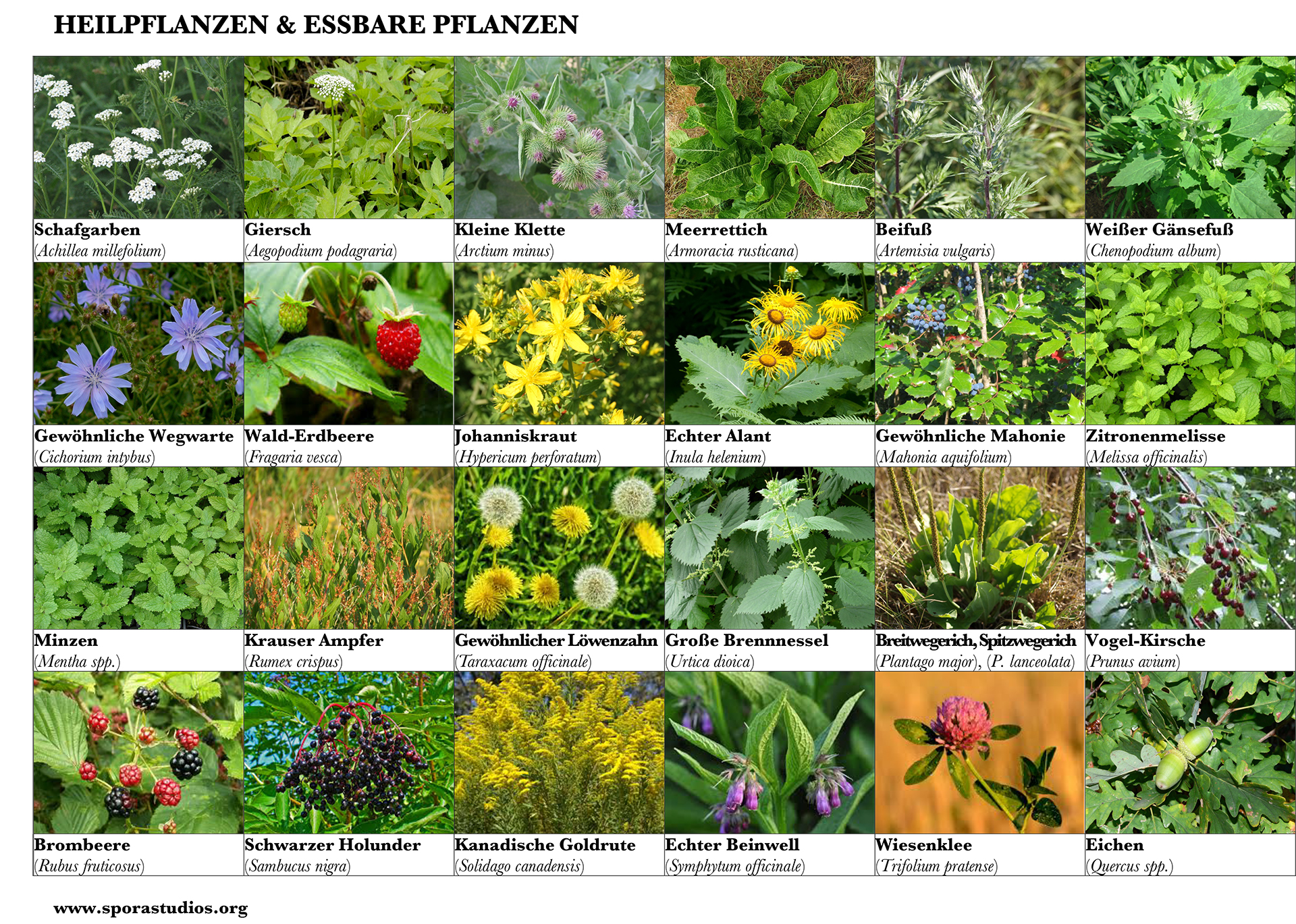


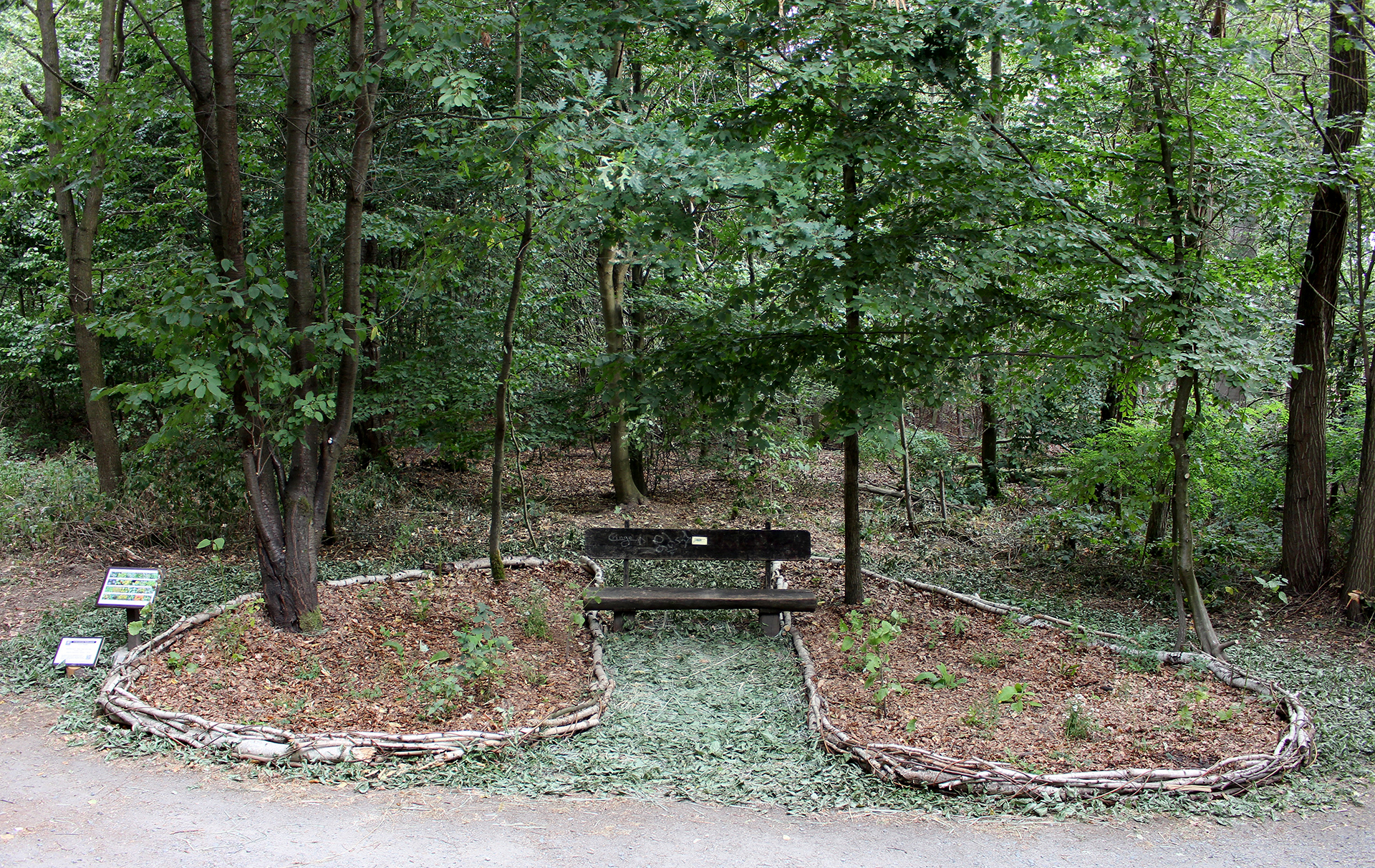
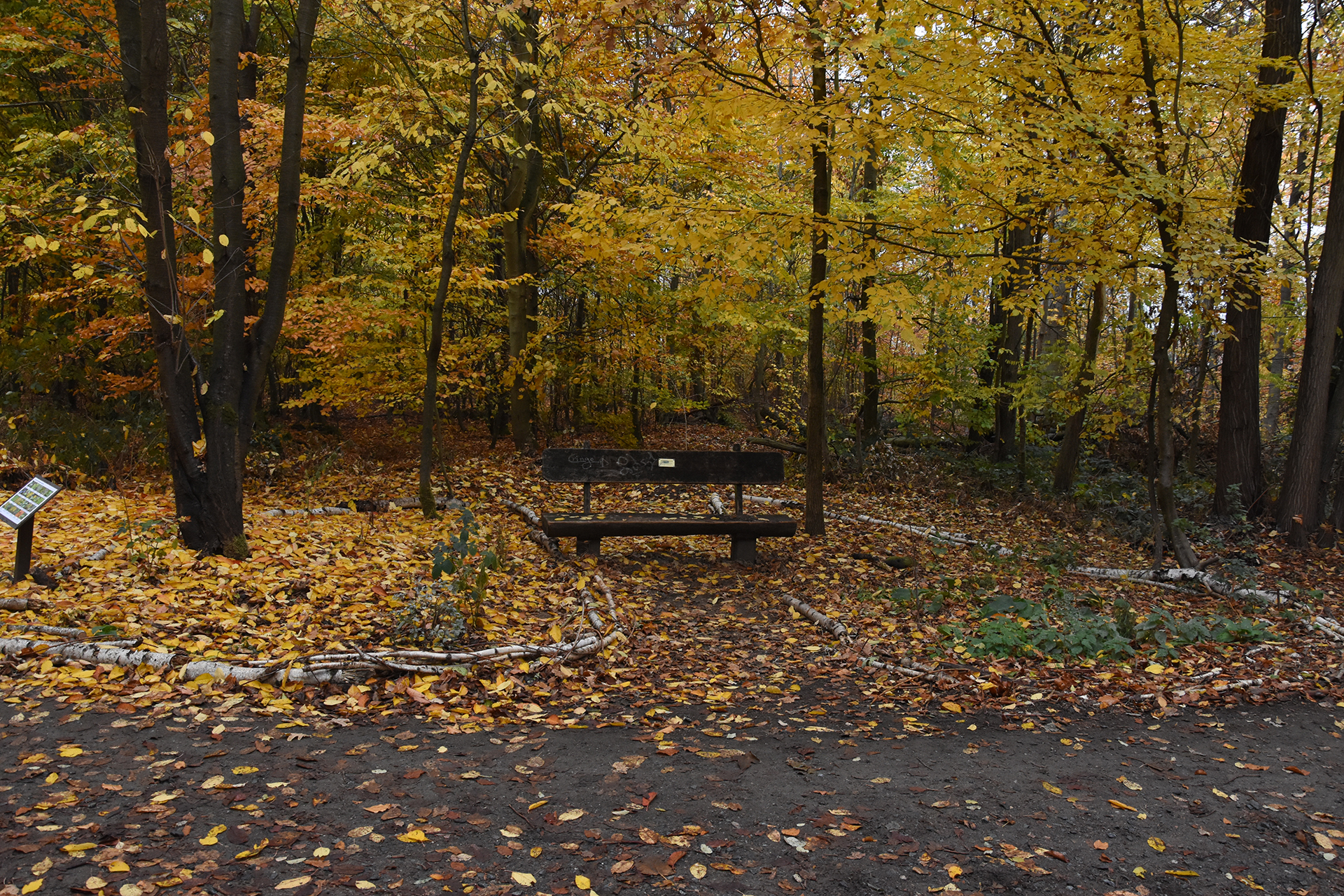
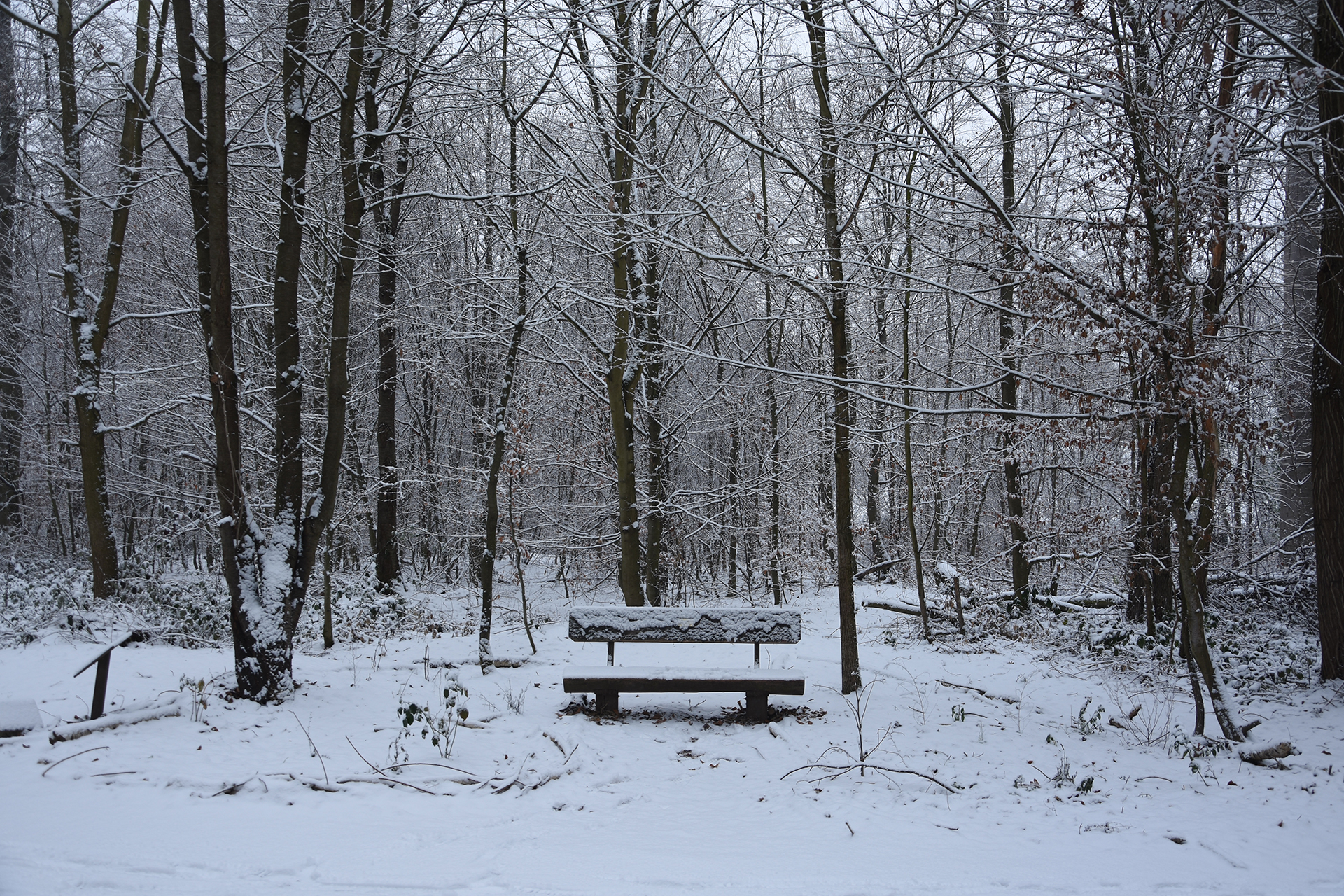
Thoughts on mending the Culture/Nature Divide
The art of permaculture gives us concepts and practical methods for dealing with the failure of industrial society to integrate the needs of humans with the needs of the environment. The “man vs. nature” paradigm has ended in a slaughter of nature, and yet the war is carried on employing the newest technologies and asserting now, with species invasions, that nature needs to be protected from nature itself. Industrial society’s inability to form sustainable relationships and interactions of humans with their environment is epitomized by its contradictory pursuit of industrial agriculture on one side and the nature preserve on the other – both heavily managed by humans to reflect a view of what “culture” and “nature” should be, but rarely introduced to one another. Permaculture offers that introduction with its concept of the “forest garden” or the “food forest”, which demonstrates that human sustenance and functional ecosystems needn’t be segregated or mutually exclusive. The forest garden eschews the polarities of farm vs. forest, wild vs. domestic, and native vs. alien, and ultimately “culture vs. nature” in an effort to focus on the functionality of ecosystems and how we might build a culture of positive and mutually productive interactions between people and the environments on which we depend. A synthesis of the concepts of wilderness and agriculture, whether it be called permaculture, ecological farming, agroforestry, or something else, shows promise for the future in terms of finding new ways of aligning the interests of humans and the natural systems that sustain us.
Thoughts on Migration and Otherness
At the heart of the rhetoric, which seeks to excuse the inhumane treatment of migrants and refugees, is the language of the other, the “alien” outsider, the scapegoat for society’s problems, who, if given the chance, would “invade” and “takeover” “our way of life”. In many contexts, we recognize the rhetoric of otherness, its sociopolitical dimension, and its manifestation into violence the world over, and yet many well-intentioned people, who might otherwise condemn such terms in reference to the social world, wholeheartedly embrace such terms regarding the natural world. We are interested in how the language of otherness, for example terms such as, native, alien, invasive, naturalized, etc. with all of their overt sociopolitical baggage have permeated our understanding of our relationship to the natural/cultural systems that sustain us. Our perspective is probably best expressed through a term common to conservationists, farmers, gardeners, and lawn manicurists alike; the term? Weed. The word has loads of subtext, conjuring notions and feelings of fear, aggression, invasion, combat, colonialism, xenophobia – fueling eradication campaigns steeped in deadly chemicals. Yet a “weed” is simply a plant maligned for being in the wrong place at the wrong time as determined by humans. We were interested in how a plant can move from being a precious, endangered thing to an alien thing simply by moving it out of place, or vice versa. We were interested in the positive role of species migrations as a way of protecting threatened species, but in a larger sense, the role of migration in building a resilient response to global climate change. We were also interested in using our knowledge of permaculture and herbalism to highlight the human and environmental benefits of many of the common, and yet disregarded or despised plants we find all around us.
Thoughts on Invasion Biology and a New Wild
The cold war era institutionalization of invasion biology helped to codify a conservative and militaristic language to describe the rapidly changing ecosystems of the 20thcentury. More recently, ecologists have begun challenging some of invasion biology’s fundamental concepts and terms. The long-held belief in the “balance of nature”, has been overturned and replaced with ecological flux. The idea that co-evolution of indigenous species is the only successful driver of ecosystems is now challenged with research on “novel ecosystems” or “synthetic ecosystems” populated with migrant species and chance encounters made successful through “ecological fitting” rather than inherent qualities tied to species origin. It seems that ecosystems are much more symbiotic, fluid, random, and adaptable than previously thought and that many of nature’s “weeds” provide essential ecosystem services. Some ecologists are even asking if many of those perceived alien invaders, with their tenacity, rapid biomass production, and ability to grow in the most inhospitable conditions, might be part of the answer to some of our most pressing problems, soil depletion, climate change, biosphere toxification and other effects of industrial society. Could it be that like migrating humans, migrating plants and animals are scapegoated for being the cause rather than a symptom of much larger forces at work? Climate change alone will certainly necessitate the relocation of species if they are to be saved. Will we look to the value of the “aliens” in our midst and see what they might have to offer for our new “wild” spaces, or will we continue to wage war aimed at conserving or recreating a natural history that may be ill-equipped to deal with a rapidly changing planet?
